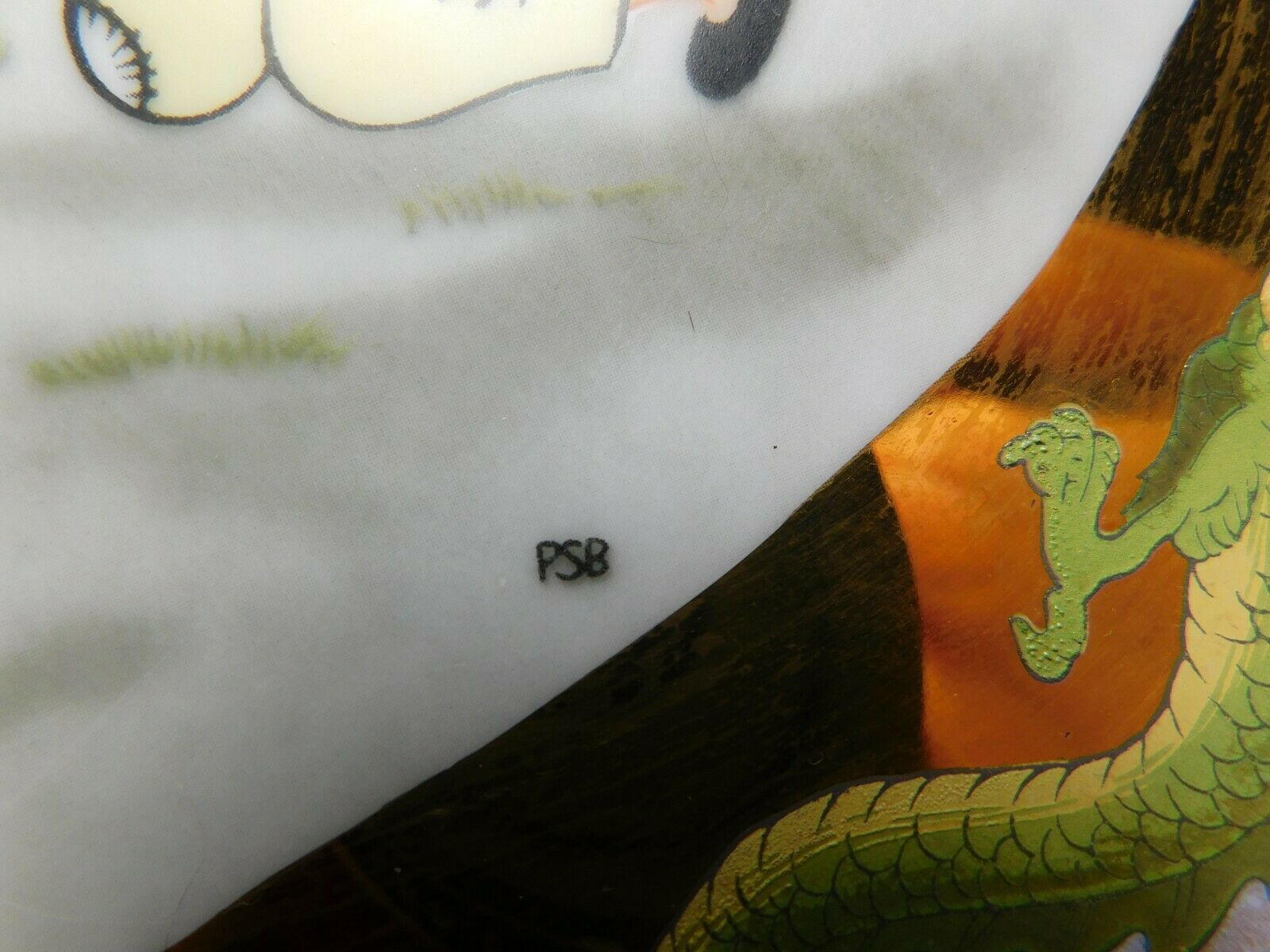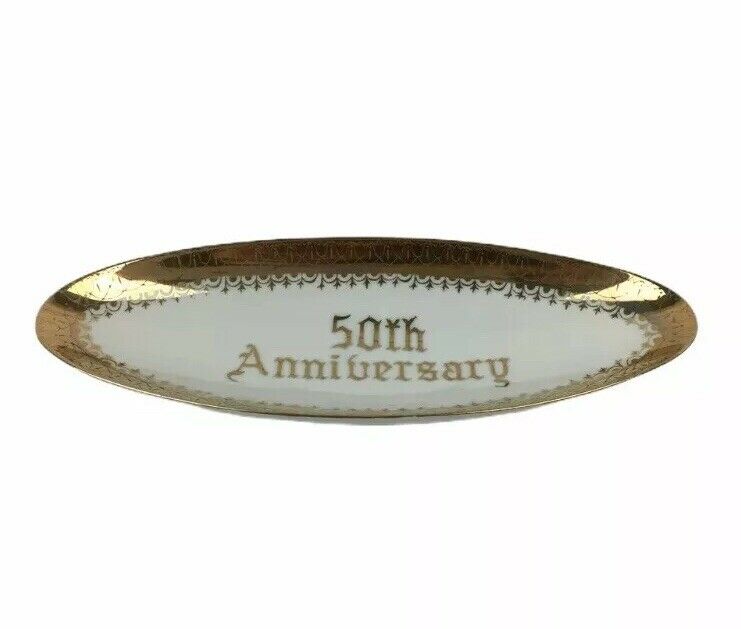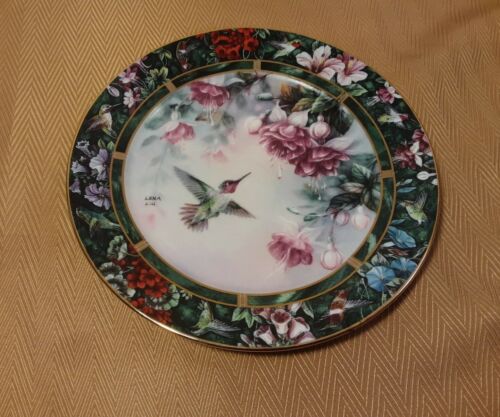-40%
Plate~Pearl S. Buck Series "The Good Earth" Italy Marked 10.25" Vintage 1973
$ 7.39
- Description
- Size Guide
Description
Pearl Sydenstricker Buck (June 26, 1892 – March 6, 1973), also known by her Chinese name Sai Zhenzhu (Chinese: 赛珍珠), was an American writer and novelist. As the daughter of missionaries, Buck spent most of her life before 1934 in Zhenjiang, China. In summer time, Buck would go with her family to stay in her father's villa in Kuling town, Mountain Lu, Jiujiang. It was on Mountain Lu during her annual summer pilgrimage that she decided to become a writer. Her novel The Good Earth was the best-selling fiction book in the United States in 1931 and 1932 and won the Pulitzer Prize in 1932. In 1938, she was awarded the Nobel Prize in Literature "for her rich and truly epic descriptions of peasant life in China and for her biographical masterpieces"; she was the first American woman to win the prize.After returning to the United States in 1935, she continued writing prolifically, became a prominent advocate of the rights of women and minority groups, and wrote widely on Chinese and Asian cultures, becoming particularly well known for her efforts on behalf of Asian and mixed-race adoption.
The Stulting House at the Pearl Buck Birthplace in Hillsboro, West Virginia
Originally named Comfort by her parents, Pearl Sydenstricker was born in Hillsboro, West Virginia, United States, to Caroline Maude (Stulting) (1857–1921) and Absalom Sydenstricker. Her parents, Southern Presbyterian missionaries, traveled to China soon after their marriage on July 8, 1880, but returned to the United States for Pearl's birth. When Pearl was five months old, the family arrived in China, first in Huai'an and then in 1896 moved to Zhenjiang (then often known as Jingjiang or, in the Chinese postal romanization system, Tsingkiang), near Nanking.
Of her siblings who survived into adulthood, Edgar Sydenstricker had a distinguished career with the United States Public Health Service and later the Milbank Memorial Fund and Grace Sydenstricker Yaukey (1899–1994) was a writer who wrote young adult books and books about Asia under the pen name Cornelia Spencer.
Pearl recalled in her memoir that she lived in "several worlds", one a "small, white, clean Presbyterian world of my parents", and the other the "big, loving merry not-too-clean Chinese world", and there was no communication between them. The Boxer Uprising greatly affected the family; their Chinese friends deserted them, and Western visitors decreased. Her father, convinced that no Chinese could wish him harm, stayed behind as the rest of the family went to Shanghai for safety. A few years later, Pearl was enrolled in Miss Jewell's School there and was dismayed at the racist attitudes of the other students, few of whom could speak any Chinese. Both of her parents felt strongly that Chinese were their equals (they forbade the use of the word heathen), and she was raised in a bilingual environment: tutored in English by her mother, in the local dialect by her Chinese playmates, and in classical Chinese by a Chinese scholar named Mr. Kung. She also read voraciously, especially, in spite of her father's disapproval, the novels of Charles Dickens, which she later said she read through once a year for the rest of her life.
In 1911, Pearl left China to attend Randolph-Macon Woman's College in Lynchburg, Virginia, graduating Phi Beta Kappa in 1914 and a member of Kappa Delta Sorority. Although she had not intended to return to China, much less become a missionary, she quickly applied to the Presbyterian Board when her father wrote that her mother was seriously ill. From 1914 to 1932, she served as a Presbyterian missionary, but her views later became highly controversial during the Fundamentalist–Modernist controversy, leading to her resignation.
Career in China
In 1914, Pearl returned to China. She married an agricultural economist missionary, John Lossing Buck, on May 30, 1917, and they moved to Suzhou, Anhui Province, a small town on the Huai River (not to be confused with the better-known Suzhou in Jiangsu Province). This is the region she describes in her books The Good Earth and Sons.
From 1920 to 1933, the Bucks made their home in Nanjing, on the campus of the University of Nanking, where they both had teaching positions. She taught English literature at the private, church-run University of Nanking, Ginling College and at the National Central University. In 1920, the Bucks had a daughter, Carol, afflicted with phenylketonuria. In 1921, Buck's mother died of a tropical disease, sprue, and shortly afterward her father moved in. In 1924, they left China for John Buck's year of sabbatical and returned to the United States for a short time, during which Pearl Buck earned her master's degree from Cornell University. In 1925, the Bucks adopted Janice (later surnamed Walsh). That autumn, they returned to China.
The tragedies and dislocations that Buck suffered in the 1920s reached a climax in March 1927, during the "Nanking Incident". In a confused battle involving elements of Chiang Kai-shek's Nationalist troops, Communist forces, and assorted warlords, several Westerners were murdered. Since her father Absalom insisted, as he had in 1900 in the face of the Boxers, the family decided to stay in Nanjing until the battle reached the city. When violence broke out, a poor Chinese family invited them to hide in their hut while the family house was looted. The family spent a day terrified and in hiding, after which they were rescued by American gunboats. They traveled to Shanghai and then sailed to Japan, where they stayed for a year, after which they moved back to Nanjing. Buck later said that this year in Japan showed her that not all Japanese were militarists. When she returned from Japan in late 1927, Buck devoted herself in earnest to the vocation of writing. Friendly relations with prominent Chinese writers of the time, such as Xu Zhimo and Lin Yutang, encouraged her to think of herself as a professional writer. She wanted to fulfill the ambitions denied to her mother, but she also needed money to support herself if she left her marriage, which had become increasingly lonely, and since the mission board could not provide it, she also needed money for Carol's specialized care. Buck traveled once more to the United States in 1929 to find long-term care for Carol, and while there, Richard J. Walsh, editor at John Day publishers in New York, accepted her novel East Wind: West Wind. She and Walsh began a relationship that would result in marriage and many years of professional teamwork. Back in Nanking, she retreated every morning to the attic of her university bungalow and within the year completed the manuscript for The Good Earth.
Pearl Buck in 1932, about the time The Good Earth was published
Photo: Arnold Genthe
When John Lossing Buck took the family to Ithaca the next year, Pearl accepted an invitation to address a luncheon of Presbyterian women at the Astor Hotel in New York City. Her talk was titled "Is There a Case for the Foreign Missionary?" and her answer was a barely qualified "no". She told her American audience that she welcomed Chinese to share her Christian faith, but argued that China did not need an institutional church dominated by missionaries who were too often ignorant of China and arrogant in their attempts to control it. When the talk was published in Harper's Magazine, the scandalized reaction led Buck to resign her position with the Presbyterian Board. In 1934, Buck left China, believing she would return, while John Lossing Buck remained.
Personal life
In 1935 the Bucks divorced in Reno, Nevada, and she married Richard Walsh that same day. He offered her advice and affection which, her biographer concludes, "helped make Pearl's prodigious activity possible". The couple lived in Pennsylvania until his death in 1960.
Writing in the U.S.
During the Cultural Revolution, Buck, as a preeminent American writer of Chinese village life, was denounced as an "American cultural imperialist". Buck was "heartbroken" when she was prevented from visiting China with Richard Nixon in 1972. Her 1962 novel Satan Never Sleeps described the Communist tyranny in China. Following the Communist Revolution in 1949, Buck was repeatedly refused all attempts to return to her beloved China and therefore was compelled to remain in the United States for the rest of her life.
Nobel Prize in Literature
In 1938 the Nobel Prize committee in awarding the prize said:
By awarding this year's Prize to Pearl Buck for the notable works which pave the way to a human sympathy passing over widely separated racial boundaries and for the studies of human ideals which are a great and living art of portraiture, the Swedish Academy feels that it acts in harmony and accord with the aim of Alfred Nobel's dreams for the future.
In her speech to the Academy, she took as her topic "The Chinese Novel." She explained, "I am an American by birth and by ancestry", but "my earliest knowledge of story, of how to tell and write stories, came to me in China." After an extensive discussion of classic Chinese novels, especially Romance of the Three Kingdoms, All Men Are Brothers, and Dream of the Red Chamber, she concluded that in China "the novelist did not have the task of creating art but of speaking to the people." Her own ambition, she continued, had not been trained toward "the beauty of letters or the grace of art." In China, the task of the novelist differed from the Western artist: "To farmers he must talk of their land, and to old men he must speak of peace, and to old women he must tell of their children, and to young men and women he must speak of each other." And like the Chinese novelist, she concluded, "I have been taught to want to write for these people. If they are reading their magazines by the million, then I want my stories there rather than in magazines read only by a few."
Humanitarian efforts and later life
Buck was highly committed to a range of issues that were largely ignored by her generation. Many of her life experiences and political views are described in her novels, short stories, fiction, children's stories, and the biographies of her parents entitled Fighting Angel (on Absalom) and The Exile (on Carrie). She wrote on diverse subjects, including women's rights, Asian cultures, immigration, adoption, missionary work, war, the atomic bomb (Command the Morning), and violence.
Pearl S. Buck receives the Nobel Prize for Literature from King Gustav V of Sweden in the Stockholm Concert Hall in 1938
She was involved in the charity relief campaign for the victims of the 1931 China floods, writing a series of short stories describing the plight of refugees, which were broadcast on the radio in the United States and later published in her collected volume The First Wife and Other Stories. In 1949, outraged that existing adoption services considered Asian and mixed-race children unadoptable, Buck co-founded Welcome House, Inc., the first international, interracial adoption agency, along with James A. Michener, Oscar Hammerstein II and his second wife Dorothy Hammerstein. In nearly five decades of work, Welcome House has placed over five thousand children. In 1964, to support children who were not eligible for adoption, Buck established the Pearl S. Buck Foundation (name changed to Pearl S. Buck International in 1999) to "address poverty and discrimination faced by children in Asian countries." In 1964, she opened the Opportunity Center and Orphanage in South Korea, and later offices were opened in Thailand, the Philippines, and Vietnam. When establishing Opportunity House, Buck said, "The purpose ... is to publicize and eliminate injustices and prejudices suffered by children, who, because of their birth, are not permitted to enjoy the educational, social, economic and civil privileges normally accorded to children."
In 1960, after a long decline in health, her husband Richard died. She renewed a warm relation with William Ernest Hocking, who died in 1966. Buck then withdrew from many of her old friends and quarreled with others. In 1962 Buck asked the Israeli Government for clemency for Adolf Eichmann, the Nazi war criminal who was complicit in the deaths of five million Jews during WWII. In the late 1960s, Buck toured West Virginia to raise money to preserve her family farm in Hillsboro, West Virginia. Today the Pearl S. Buck Birthplace is a historic house museum and cultural center. She hoped the house would "belong to everyone who cares to go there," and serve as a "gateway to new thoughts and dreams and ways of life."
Long before it was considered fashionable or politically safe to do so, Buck challenged the American public by raising consciousness on topics such as racism, sex discrimination and the plight of Asian war children. During her life, Buck combined the careers of wife, mother, author, editor, international spokesperson, and political activist.
Final years
In the mid-1960s, Buck increasingly came under the influence of Theodore Harris, a former dance instructor, who became her confidant, co-author, and financial advisor. She soon depended on him for all her daily routines, and placed him in control of Welcome House and the Pearl S. Buck Foundation. Harris, who was given a lifetime salary as head of the foundation, created a scandal for Buck when he was accused of mismanaging the foundation, diverting large amounts of the foundation's funds for his friends' and his own personal expenses, and treating staff poorly. Buck defended Harris, stating that he was "very brilliant, very high strung and artistic." Before her death Buck signed over her foreign royalties and her personal possessions to Creativity Inc., a foundation controlled by Harris, leaving her children a relatively small percentage of her estate.
Death
Pearl S. Buck died of lung cancer on March 6, 1973, in Danby, Vermont.
After her death, Buck's children contested the will and accused Harris of exerting "undue influence" on Buck during her final few years. Harris failed to appear at trial and the court ruled in the family's favor.
She was interred in Green Hills Farm in Perkasie, Pennsylvania. She designed her own tombstone. Her name was not inscribed in English on her tombstone. Instead, the grave marker is inscribed with Chinese characters representing the name Pearl Sydenstricker.
Legacy
Pearl S. Buck's former residence at Nanjing University
A statue of Pearl S. Buck stands in front of the former residence at Nanjing University
Many contemporary reviewers were positive and praised her "beautiful prose", even though her "style is apt to degenerate into over-repetition and confusion". Robert Benchley wrote a parody of The Good Earth that focused on just these qualities. Peter Conn, in his biography of Buck, argues that despite the accolades awarded to her, Buck's contribution to literature has been mostly forgotten or deliberately ignored by America's cultural gatekeepers. Kang Liao argues that Buck played a "pioneering role in demythologizing China and the Chinese people in the American mind". Phyllis Bentley, in an overview of Buck's work published in 1935, was altogether impressed: "But we may say at least that for the interest of her chosen material, the sustained high level of her technical skill, and the frequent universality of her conceptions, Mrs. Buck is entitled to take rank as a considerable artist. To read her novels is to gain not merely knowledge of China but wisdom about life." These works aroused considerable popular sympathy for China, and helped foment a more critical view of Japan and its aggression.
Chinese-American author Anchee Min said she "broke down and sobbed" after reading The Good Earth for the first time as an adult, which she had been forbidden to read growing up in China during the Cultural Revolution. Min said Buck portrayed the Chinese peasants "with such love, affection and humanity" and it inspired Min's novel Pearl of China (2010), a fictional biography about Buck.
In 1973, Buck was inducted into the National Women's Hall of Fame. Buck was honored in 1983 with a 5¢ Great Americans series postage stamp issued by the United States Postal Service In 1999 she was designated a Women's History Month Honoree by the National Women's History Project.
Buck's former residence at Nanjing University is now the Sai Zhenzhu Memorial House along the West Wall of the university's north campus. U.S. President George H. W. Bush toured the Pearl S. Buck House in October 1998. He expressed that he, like millions of other Americans, had gained an appreciation for the Chinese people through Buck's writing.
Pearl Buck's papers and literary manuscripts are currently housed at Pearl S. Buck International and the West Virginia & Regional History Center.




















